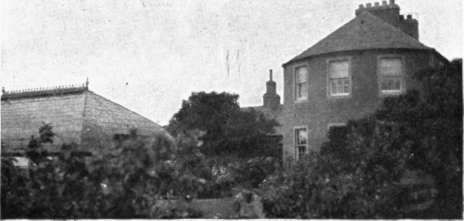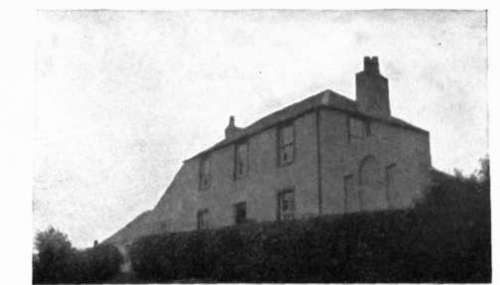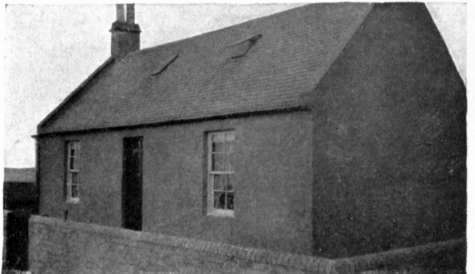Girvan, Scotland
Description
This section is from the book "The Potato: A Compilation of Information from Every Available Source", by Eugene H. Grubb, W. S. Guilford. Also available from Amazon: The Potato: A Compilation Of Information From Every Available Source.
Girvan, Scotland
Girvan is a town on the western coast of Scotland, on the Firth of Clyde. It is the birthplace of Hon. James Wilson, Secretary of Agriculture of the United States.
It is the earliest potato-growing district in northern Great Britain. It is on the coast where they have no severe late spring frosts, because of the protection from the Gulf Stream. Potatoes are planted the first of March and they commence harvesting in June. The soil is a wonderful light, warm, sandy loam. The conditions here are the best I have seen in Europe for potato production.
There are five thousand acres of early potatoes produced annually in this district. They are, without exception, of one variety, Sutton's Epicure. This variety clearly fills all the requisites of the climate conditions in that it is a low, sturdy grower with tough leaves and vines. There are stiff sea breezes and violent storms that come from the sea. These do not injure or damage the plant by whipping and beating. It is an early, strong grower, the tubers form early, it is round and white, and yields well. It is much in demand in the cities throughout Great Britain.
I visited Mr. John Hannah, Girvan, Mains, the leading and largest potato grower of the district. His system varies little from that of Mr. Wallace of Terreglestown. He has the same total acreage of 300 acres, and has continually the same acreage in potatoes - 260 acres. He differs from Mr. Wallace in that his potatoes are all sold for market in June and July, and he does not grow and save his own seed. Every year Mr. Hannah buys his seed in July from other growers in the district. By selecting his seed from the best fields and crops there is apparently no disease whatever, so far as I could learn.
His potatoes are all sold to dealers in the different cities. The same merchants come back year after year and buy the same fields at from $140 to $175 an acre. The merchants lift (dig) and barrel the potatoes, and Mr. Hannah puts them on the cars. It is surely a novel system of harvesting a crop. These city merchants harvest the crop from day to day as their customers in the various cities require them, and there is no loss in shipping to commission brokers by overstocking and breaking the market.

Mr. Hannah and Mr. Grubb in potato field.

Digging potatoes at Girvan Mains.

Potato field on Girvan Mains Farm - ocean in the distance.

Garden on Girvan Mains Farm.

Buildings on Little Pinmore Farm, Scotland -birthplace of Secretary Wilson.

Farm buildings, Girvan Mains Farm.

House on Little Pinmore Farm.

Laborer's house, Girvan Mains.
I had a very delightful time with Mr. Hannah, going over his work and discussing methods. He uses larger sized seed than Mr. Wallace. Mr. Hannah plants 3,000 pounds of whole seed per acre, and, of course, insists that it must be only partly matured when dug. It was very interesting to go over the field, seeing in nearly every hill examined the originally planted seed potato still clinging to the roots as firm and sound as when planted last March. I did not see a single colored leaf or a dying or withered leaf in a field of 100 acres (June 25, 1910).
Mr. Hannah uses seaweed that washes up on the beach for fertilizing. It is gathered and spread on the field in the fall at the rate of forty tons per acre. On the balance of the land he uses twenty tons of well-rotted barnyard manure annually. In fifteen years he has increased the application of commercial fertilizer from some 600 or 700 pounds to about 1,200 pounds per acre, annually. There is a steady increase in the use of commercial fertilizer to keep up the maximum yields.
He had commenced harvesting the day I was there, the 25th of June. The next morning the grass seeder was out ready to start planting. He used three bushels of French grown Italian rye grass seed per acre and then I think a little more was added for good measure, as he said it cost $5 per acre. His 260 acres of potatoes will be harvested in two weeks' time. Instead of plowing the rye grass cover crop under as at Dumfries, Mr. Hannah buys 3,000 head of sheep. He usually puts in forty acres of rape, although he can grow rape only about one year in six on account of the finger and toe disease. He would grow more rape than Italian rye grass if it were not on account of this. These 3,000 sheep are started grazing about August first. They cost $8 a head. When finished for market they are slaughtered on the farm and the dressed carcasses sent to the London market. Great care is taken that all the offal from the sheep, except what can be sold, goes into the fertilizer heap. Not even the blood is lost. Nothing seems to go to waste on a thrifty Scotchman's farm. The slaughtered sheep give an increase in value of about $1.75 per head. No grain or cake is fed - nothing but rape and Italian rye grass pasture. These sheep are pastured in hurdled lots. They are slaughtered once a week until the sheep and pasturage are all gone.
When the grass is fed off, the forty tons of seaweed or twenty tons of manure are spread on the stubble and plowed under in the late fall or early winter.
This farm has been growing potatoes with this same system for thirty consecutive years, the son succeeding his father, and Mr. Hannah sees no change in the yield. This is the most favorable year and the best yield he has ever produced. He sees no reason if this farm has grown potatoes for 100 years why it should not go on forever.
The cost of production is practically the same here as at Mr. Wallace's, Dumfries - $110 per acre. He plows about the same depth, nine inches, and has the same system of boxing and sprouting.
With his peculiar conditions, plowing under the cover crop has given no better results than the growing of forage crops and grazing it off with sheep, and he has the additional profit of $1.75 per head for the sheep.
In this northern latitude he is getting two crops a year, one of potatoes, a cover crop of forage, and an increased value in fattening a flock of sheep. Surely this is a fine example of intensified farming, that can well be imitated in many favored districts of the United States.
While I was there a little incident came up that is well worth recording. A golf club wanted Mr. Hannah to release twenty-four acres of his leasehold. He had nine years yet to run on his nineteen year leasehold. After assuming the lease on the twenty-four acres for the nine years, and paying the annual rental to the owner and an additional bonus to Mr. Hannah for the release, they then paid him $1,000 for the unexhausted manure that he had applied on the twenty-four acres after removing the crop. A very large part of this land had been tiled to three feet deep, the lines of tile being fifteen feet apart.
Another piece of work he did on a piece of heavy clay land was to cart pure, clean-washed sand and cover ten acres five inches deep with it. He claims that in the increased production and the ease of cultivation it was a paying investment on leased land. This is a good illustration of the great value of the easy working lands of the Twin Falls country in southern Idaho, because it certainly cost a considerable sum of money to have this land covered five inches deep with sand. Mr. Hannah is continuing this work on other land.
It was very interesting to see this scientific, practical, money-making potato grower doing experimental and demonstration plot work with the various combinations of fertilizer. Barnyard manure had been applied to all of the plots.
The use of 1,200 pounds of commercial fertilizer in addition to barnyard manure gave an additional yield of seven tons per acre, at an expense of $22, or about $3 per ton for the excess yield.
Mr. Hannah is a contented, satisfied, tenant farmer. He has made a great success in specialized potato growing for the early markets, on high priced, high rate, rented lands. He is probably worth over $200,000, and is living a life of comfort in a beautiful home. He has servants, beautifully kept lawns, parks and gardens, with all kinds of fruits and flowers, and a conservatory for growing hothouse plants and fruits out of season. This is agriculture on ideal lines. The house he lives in is 102 years old.
The popular opinion in America is that it is disgraceful, undignified, and belittling to be a tenant farmer. But here is a tenant farmer who has acquired a quarter of a million dollars as a potato grower, but he is a specialist and he specializes to such an extent that he has more leisure for travel and pleasurable recreation than merchants, mechanics, or professional men, or any well-to-do farmer in America who owns his land, occupies, and farms it.
These tenant farmers are paying high land rentals and for expensive fertilizers, $5.60 a ton import duties on potatoes into the United States and ocean rates, yet they can successfully compete with the American farmer with all his improved implements and cheap lands.
Continue to:


